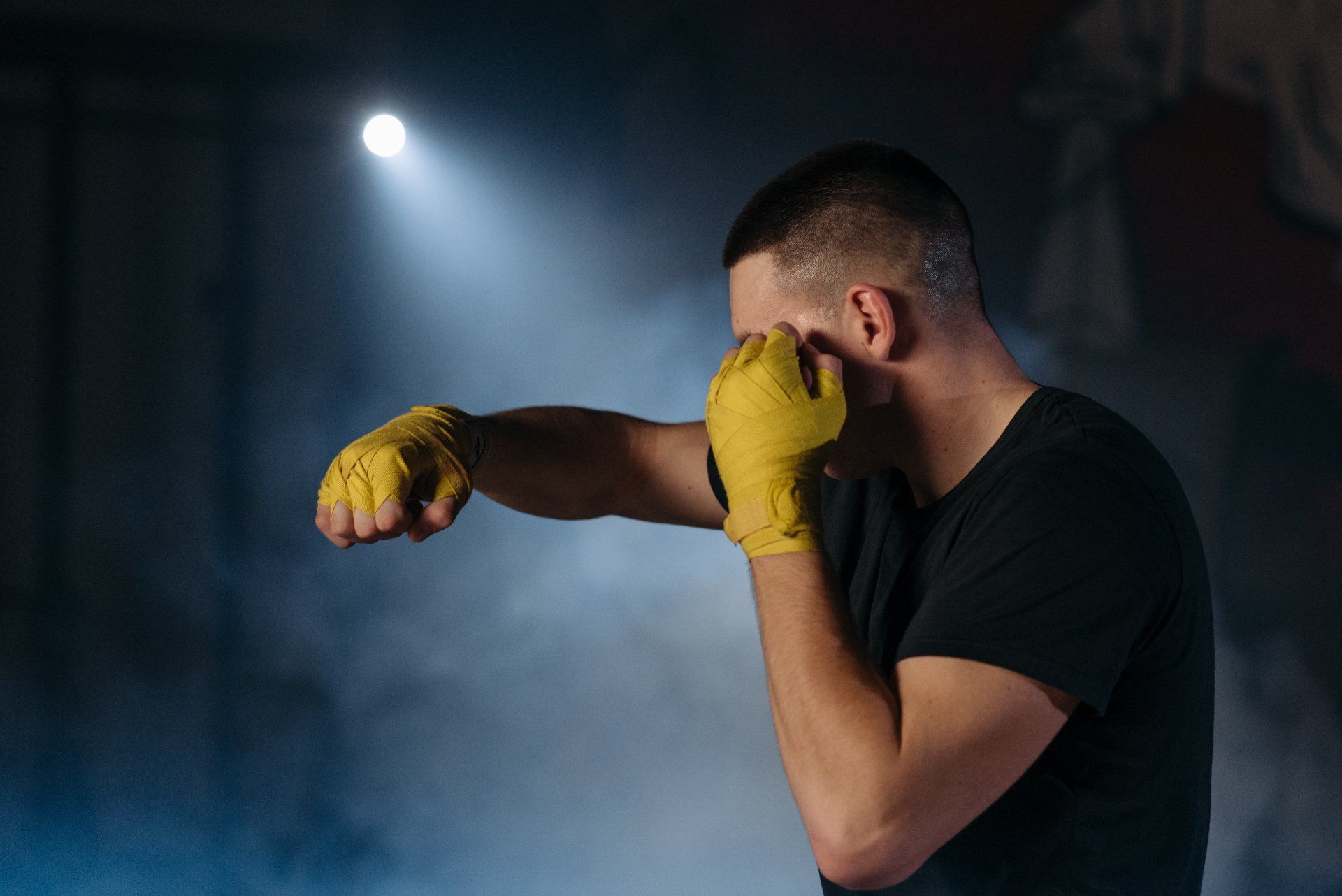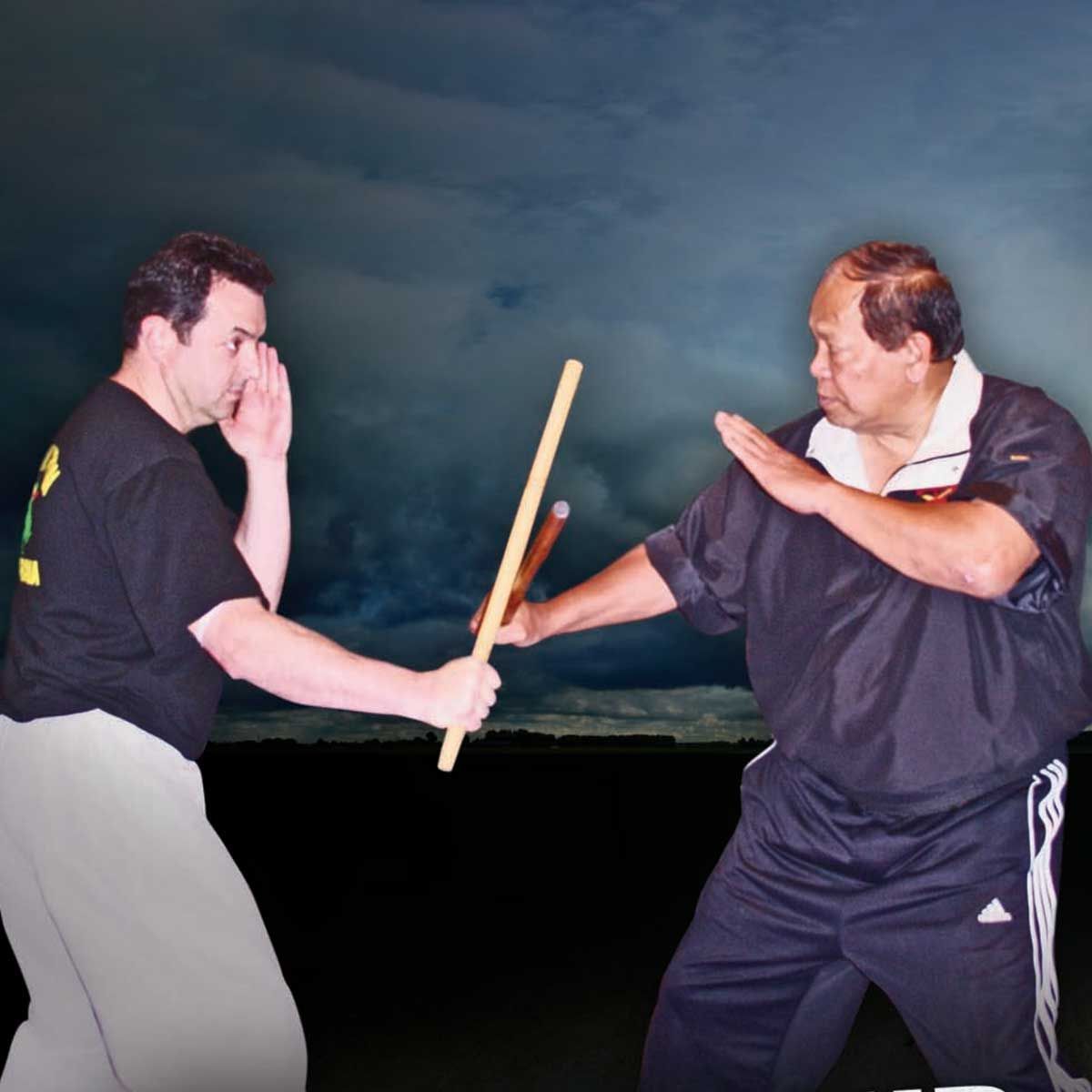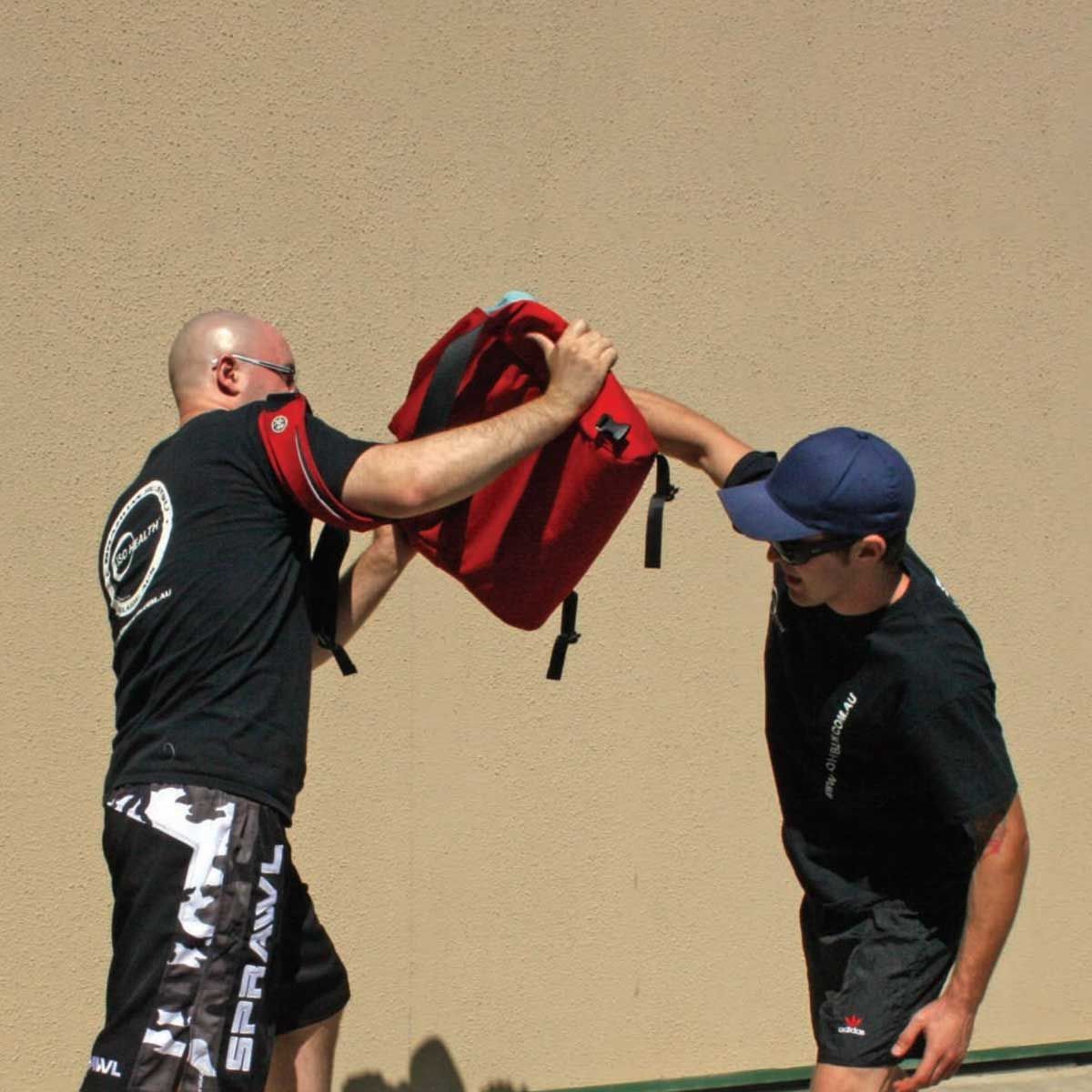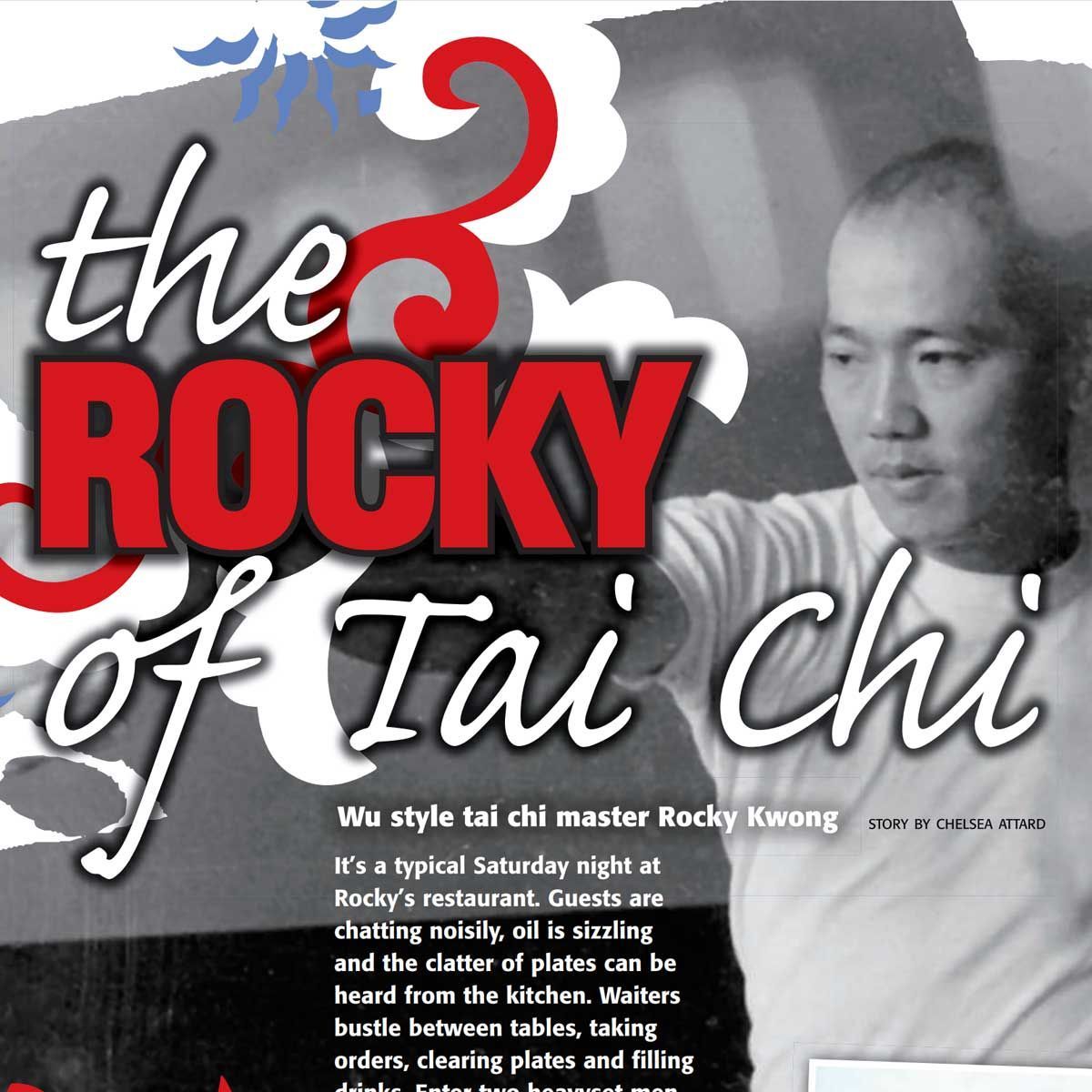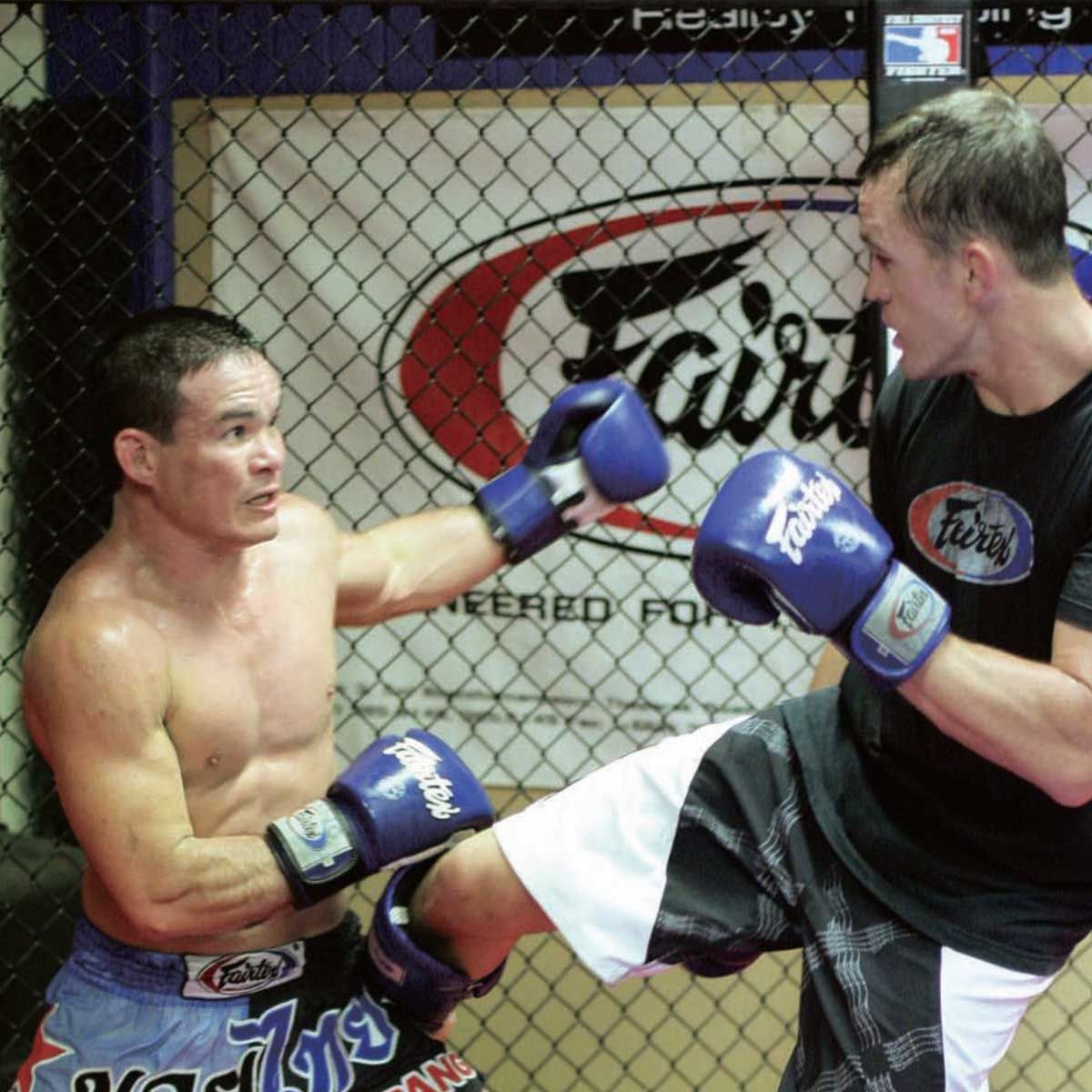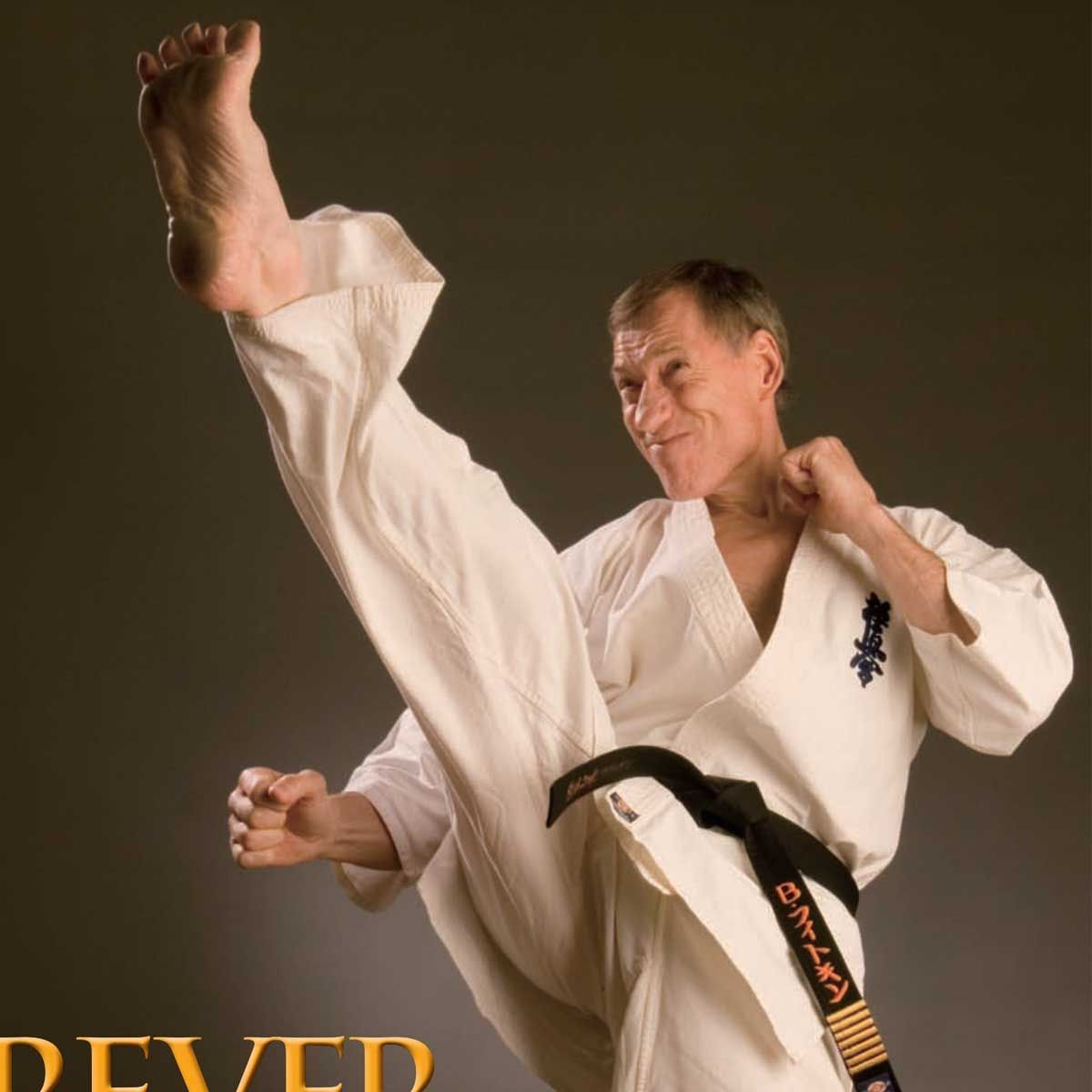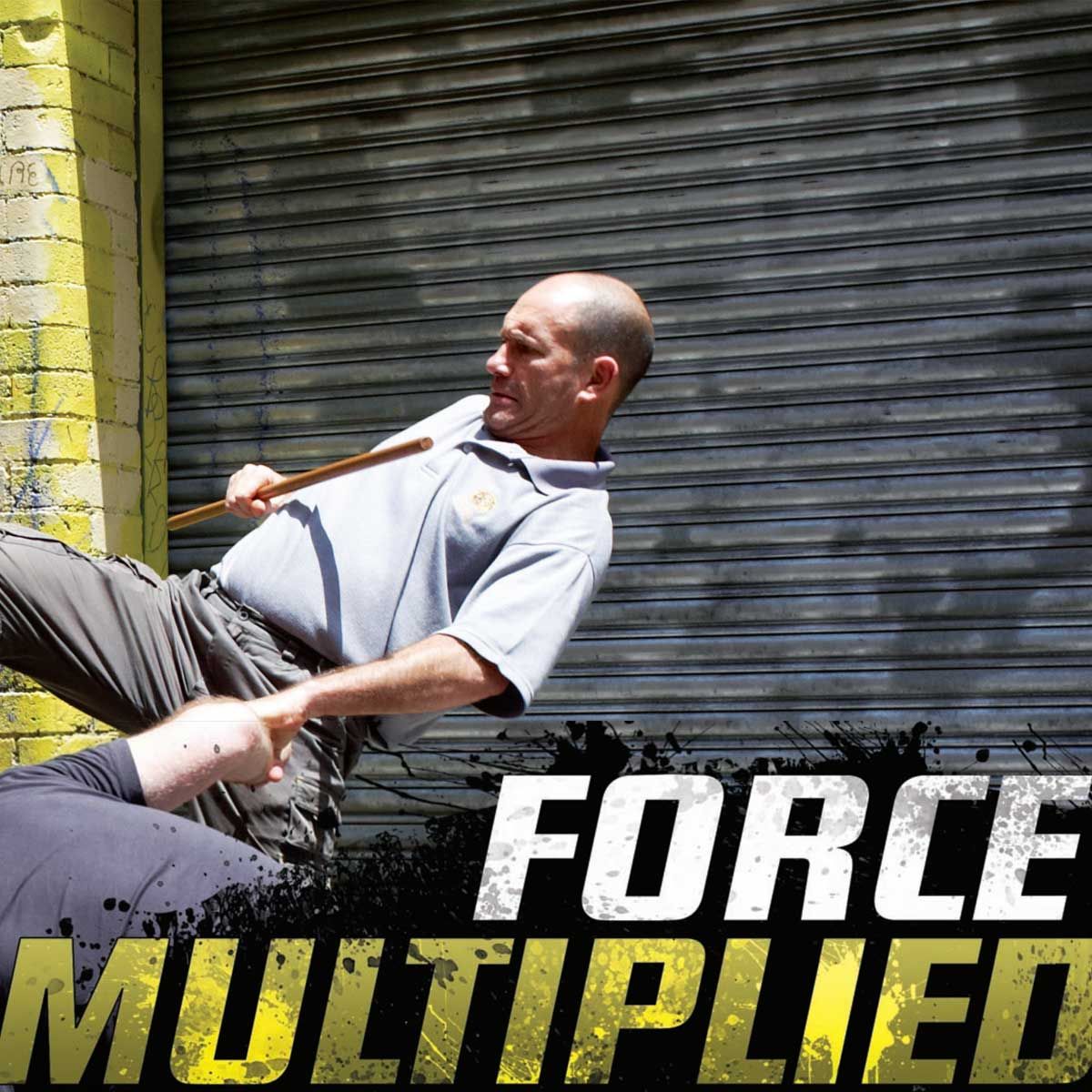
FROM SPORT TO STREET - Matt Jones
New Paragraph
Some instructors and students will always prefer ‘the ostritch method’ of self-defence training — that is, burying their heads in the sand when it comes to honest assessment of their martial art or sport’s applicability to real, ugly street violence. Many others, though, acknowledge that martial art, sport and survival are different areas of expertise. While some of the skills certainly cross over, the street demands a different application and attitude than art or sport. Here, realitybased self-defence instructor, sport BJJ coach and personal trainer Matt Jones explains how you can bridge the gap between art or sport and street survival skill. Bridging the gap from art & sport to real self-defence – part one. BY MATT JONES
Martial arts are terrific: they give many benefits to those who train in them and each and every martial art has something to offer its practitioners. Pure self-defense systems also have a lot to offer and in many cases there is a clear distinction between them and martial arts/sports. That said, any martial art or combat sport that has you training with a resisting opponent is going to better prepare you for a self-defence situation because at least you’ll be somewhat used to someone fighting you, rather than just letting you fight them. However, failure to acknowledge some of the key differences and gaps between martial arts/ sports and self-defence will result in some pretty unpleasant consequences for martial artists or sport fighters who fi nd themselves in a self-defence situation.
In the debut issue of Blitz Publications’ new magazine Inside MMA, John Will wrote an excellent article that highlighted many of the key differences between sports fighting and self-defence. Will made the point that many of the skills from sports fighting are extremely useful in self-defence situations but that you’ll also need to adapt those skills to the street environment. That’s what this article is about. In this two-part feature, we will look at some simple drills designed to help bridge that gap between arts, sports and self-defence in an effi cient, effective and fun way. I know this because we use these types of drills at my gym ISOHEALTH every week and even our students who are purely into sports BJJ will admit that these are a lot of fun. Keep in mind that these drills are just guiding examples though, so use your own judgment to tweak them as you see fit.
If you incorporate them into your existing schedule each week (or even each fortnight) on top of your regular training, you will broaden your skill set and be better prepared for a real self-defence situation. It’s worth mentioning that our traditional idea of what constitutes winning in sports matches is very different from what constitutes winning in self-defence situations. In selfdefence, a win can be avoiding the fi ght altogether (the best option), fl eeing at the fi rst available opportunity, surviving long enough for help to arrive, and other scenarios that are quite different from a sports martial artists’ usual goal of achieving a submission or knockout. Furthermore, what constitutes a win in sports martial arts could be what lands you in a prison cell if you achieve the same ‘win’ in a self-defence situation.
The five areas I believe are most important for addressing the gap between sports martial arts and self-defence are:
• Foul Tactics (Offence and Defence): Dealing with and using gouges, biting and groin strikes
• Multiple Opponents: Tactics, evasion and determination when outnumbered
• Weapon Defence: Emptyhanded defence against edged and impact weapons
• Pre-Confl ict Knowledge: The moments before the physical part kicks off
• Post-Conflict Knowledge: Post-conflict self-defence — words have meaning in a court of law (e.g. did your attacker have you in a headlock, or was he choking you and thus you were in fear of your life?)
Here we will cover two great drills: the first will give you a realistic method for training the use and defence against ‘foul tactics’; the second will provide you with a realistic method of training for multiple opponents. When I say ‘realistic’, I mean that these drills can be performed with the same type of resistance you are used to using in your martial arts training. This is not ridiculous self-defence play acting that must be performed with no resistance because the techniques employed are ‘too deadly’; they are drills that help us train dangerous methods such as eye gouging and groin strikes in a relatively safe manner, but against resisting opponents. Training against resistance is crucial to practical self-defence skill — otherwise, how you do even know it works? How do you know you have the timing and skill to pull it off? How do you know at what range you should really use that technique?
Anyhow, enough ranting. Here are the first two drills:
DRILL #1: GOGGLE GRAPPLING
The focus: Foul tactics (offence and defence). How you win: A win in this drill can be gaining an effective eye gouge on your opponent, achieving a submission, unanswered strikes from a dominant position, or breaking free and fleeing the scene. How to play: Grab a partner and grapple/wrestle for rounds of six minutes with a one minute rest, within the rules of your usual sport (i.e. BJJ, judo, hapkido, etc.) but allowing eye gouges and (controlled) groin attacks. Each participant must wear a good groin protector and construction-style eye goggles. (The eye goggles I’ve found best over the years, pictured here, are availability from pretty much any hardware store and cost only around $5.50 per pair. They are flexible and thus don’t break easily, and are light while providing full coverage of the eyes.) As you wrestle, you can look for positional dominance and submission like you normally would, but both parties can also attack each other’s eyes (goggles) with gouges. If one person manages to effectively gouge the other, that’s considered a win and the loser will have to do a penalty at the end of the session or even during the round, if that’s what you decide. The penalty may be a number of push-ups, sit-ups, burpees, etc. The important thing about this drill is that it teaches people to protect their eyes and also to look for opportunities where an eye gouge may be a more effective and more efficient offensive tool than an arm-bar or a choke.
It’s important to remember that for the gouge to be deemed a win, it must be one where the attacker has shown significant dominance and not just a light scrape of the goggles. There should be enough pressure on the goggles that both the attacker and the person being gouged know that the gouge would have had some effect. Once you’ve incorporated some of the goggle grappling into your training you can then put on a groin guard and add groin strikes to the mix. Simulated biting is also another great addition. Regular striking such as punches, kicks, elbows and knees can then be added to these drills to really increase the realism but keep in mind that hitting the face is somewhat off limits because a strike that lands on the goggles will drive them into the opponent’s face and likely cause injury (and will often break the goggles too). You could use headgear with a face shield for these same drills but the goggles tend to feel less obtrusive and thus add a greater sense of freedom and realism. Start your grapples from various positions (i.e. standing pinned against a wall, from under side-control or mount, back control, the guard, etc.) and fight for the win. This drill is extremely important because many grapplers say, ‘oh well, if he gouges me I’ll just break his arm’. They fail to acknowledge that breaking someone’s arm isn’t going to bring back their eyesight if the attacker gouges their eyes before you manage to break his arm. Protecting your eyes should be part of your defensive strategy, not just an afterthought or wishful thinking (same goes for biting and groin strikes). All of your existing sports martial arts skills will come into play during these rounds of ‘goggle grappling’ but you’ll just have the added element of delivering and defending against eye gouges, groin and attacks and simulated biting.
IMPORTANT NOTE ON USE OF FORCE:
The legal side of self defence is a murky area but it’s well accepted that many legal systems will recognise certain methods as being ‘excessive force’ or even ‘lethal force’. A lot of us in grappling circles will apply chokes many times during sparring but if you apply a choke in self-defence you may be considered to have used excessive or lethal force. With my students who are law enforcement officers, I modify their training goals to ensure they don’t immediately look for a rear-naked choke when they take the opponent’s back because in their line of work they could get in a lot of trouble if they sink in a choke on someone they are trying to control. I also remind my students that if they keep delivering strikes from the top position when on the ground they run an increased risk of being seen as committing an assault rather than just defending themselves. This is an area that I strongly recommend all martial artists spend some time investigating, because the very instincts you build every day at training could land you in legal hot water when there may have been other options at your disposal. Eye gouging is, in many cases, something that must be justified because it too can be a considered a lethal force.
DRILL #2: MULTIPLE OPPONENTS
The focus: Awareness of, and tactics for, fighting more than just one person simultaneously — a likely occurrence given the increasing occurrence of group attacks. How you win: A win in this drill is for the ‘good guy’ to get to the ‘safe zone’ and/or survive the attack long enough for help to arrive. How to play: This drill is simple: everyone in the training room will walk around, milling about from one end to the other. Among this group of people there will be two, three or four people nominated as ‘bad guys’ but only they will know who they are. Everyone will have the appropriate safety gear on (if eye attacks are in, then everyone wears goggles; if groin attacks are in, then everyone wears groin guards, etc.) and as everyone ambles out, the bad guys will, at a time of their choosing, launch an attack on any person they choose. The job of everyone other than the bad guys is get clear of the fight and flee to the designated safe zone, which can just be a cordoned-off section of the training mat. The goal of the bad guys is to attack their victim and achieve positional dominance over them by taking them to the ground and keeping them on the ground under their control. Obviously, the worst-case scenario when fighting multiple attackers is to end up on the ground, so that’s why taking the good guy down is the bad guys’ main goal. Once the supervisor of the drill deems that either the bad guys have achieved dominance or that the good guy has managed to flee, then the drill is stopped and new round is commenced with new bad guys and preferably a new good guy. As with the goggle grappling drill, all of your existing martial art/sports skills can be employed during the multiple-opponent drill but you’ll soon discover what skills are suitable for this situation and what skills are best left for the one-on-one match-ups. Experiment with different rules of engagement with these drills; perform some rounds where the bad guys wear goggles and thus can be eye-gouged, perform other rounds where everyone wears goggles and thus everyone can be using gouges including the bad guys. You’ll soon notice that if two or more bad guys are hell-bent on taking you down to the ground it’s pretty damn hard to stop them without using eye gouges and clinch work to position the nearest bad guy as a shield.
THE UPSHOT
The purpose of this article is not to teach multiple-opponent tactics, but to give you some drills that will help you discover for yourself the best methods of dealing with this type of situation. I honestly believe that if you take 100 groups of martial artists and have them train this particular drill for long enough, most of them will come up with the same sort of approach for making the best of this bad situation. These drills offer a safe way to train foul techniques with real resistance and aggression, and thus you can fi nd the truth in it for yourself. Every time you do the drill you’ll be getting instant feedback as to whether your methods are really capable of combating real down-and-dirty violence. In the next article I’ll cover a method for learning to defend against edged and impact weapons, and provide some insight into how I teach that. I’ll also provide some information on the pre- and post-conflict aspects of self-defence, which may not be as exciting as sparring, but are certainly vitally important to your game should you fi nd yourself in a potentially life-threatening situation. ▯
Blitz Martial Arts Magazine, FEBRUARY 2010 VOL. 24 ISSUE 02
SCROLL VIA CATEGORIES
